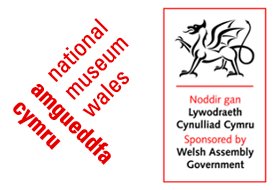Evidence for Catastrophic Events
- Introduction
- Comets
- Asteroids
- Meteorites
- Meteor Showers
- Rock Types
- Identification
- Origins
- Destruction
Until 1980, each of these hypotheses had strong supporters and there was no consensus at all. In that year, a crucial paper was published in ‘Science’ magazine that thrust the meteorite impact hypothesis into prominence and eventual acceptance by most scientists. The K-T boundary had been investigated for many years as scientists searched for the cause of the extinctions.
The rocks from this period seemed to indicate a global catastrophe, but at this boundary they are not exposed at the Earth’s surface in very many places. Some of the best exposures are in Northern New Mexico, and in southern Canada, Italy, Spain, Denmark, and New Zealand. At all of these sites, the K-T boundary is defined by a thin layer of greyish clay. Rocks at these sites include sandstones from ancient river valleys, limestones from ocean reefs, and cherts from the ocean floor. The grey clay is present in all of them. Cretaceous fossils, marine or terrestrial, are present below the grey clay but are never found in rocks above the grey clay. The fact that the same grey layer with the same lack of fossils above, are found in rocks across the world shows that whatever happened at this time was a global event.

The KT clay layer is clearly visible here
Another piece of evidence from the study of the K-T boundary clay that gave particular credence to the theory that an asteroid had hit the Earth was the discovery of Iridium in the clay layer. Iridium is extremely rare in rocks from the Earth’s surface, but is much more abundant in common meteorites (as explained on page 18). Scientists found that the layer of clay was extremely rich in this element, adding to the evidence that a large object from space did impact the Earth at the time of the extinction. From studying the amount of iridium at the K-T boundary, scientists estimated the size of the impactor in question to be about 10km in diameter.
More ‘shocking’ evidence
Scientists across the world have searched for additional evidence for an asteroid impact at the K-T boundary time. In the grey clay they also found other features consistent with a meteorite impact, including shocked quartz and tektites (melted rock).
Scientists also found soot in the clay layer — enough soot to suggest that enormous fires consumed much of the Earth’s vegetation. In the rocks below the grey clay, they also recognized deposits from enormous ocean waves which might have been tsunamis caused by an impact. In addition, they found broken rock in unusual places that seem to have been the result of earthquakes (which again, could have been triggered by an impact).

Shocked quartz is a form of the mineral quartz, but which, when viewed under a microscope, looks very different, with patterns of lines crossing the mineral. It was originally found in underground bunkers where nuclear bombs had been tested, and was thus confirmed to form in rocks where there has been a very sudden increase in pressure. It has subsequently been discovered in rock layers at various geological time periods, including the KT boundary time, giving further evidence to scientists that impacts occurred on Earth at these times.


